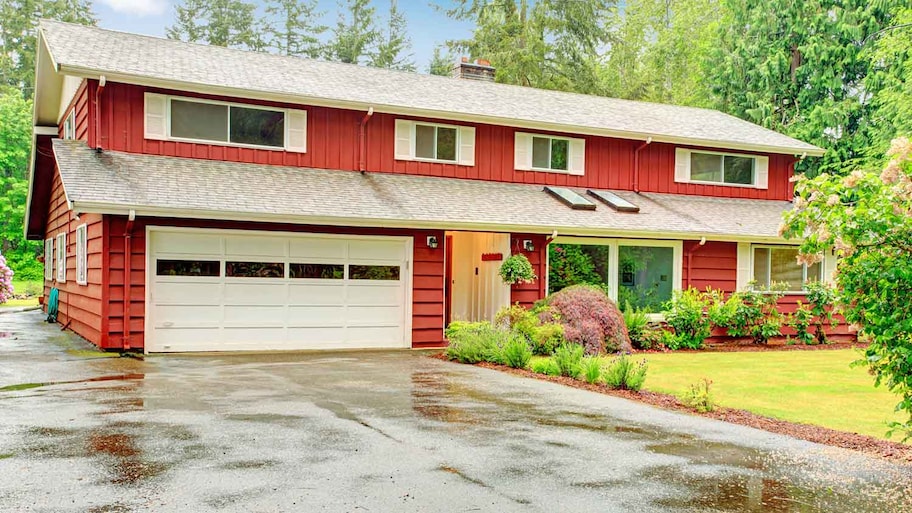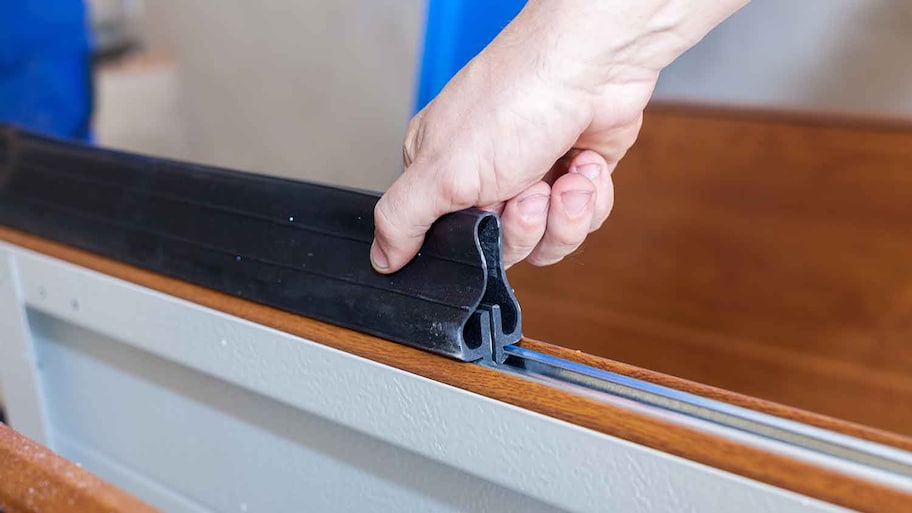How to Keep Water from Coming In Under Your Garage Door
You must act fast when water’s involved


A little water here, a little water there, and suddenly, there's a whole lot of water everywhere. If you notice water making its way into your garage, you must act fast to avoid damage to your personal items and electrical wiring. The growth of mold and mildew is also a concern when things get too damp. Learn how to keep water from coming in under your garage door to keep your space dry and dependable.
Understand the Causes
There are a handful of different reasons why your garage door may be letting water in. Knowing the why behind this issue can stop it from happening in the first place.
Heavy Rainfall
Rainy days are all fun and games until the rainfall starts to cause damage to your home. There are a few factors behind why heavy rainfall can lead to water infiltration under a garage door.
Intensity of rainfall: During heavy rainfall, the volume of water landing on the ground around your garage can be substantial. If the rainfall is intense, it may overwhelm the natural drainage capacity of the surrounding area, leading to water pooling.
Wind-driven rain: Strong winds accompanying heavy rainfall can exacerbate the situation. Wind can push rainwater against the garage door, finding its way through gaps, cracks, or any openings in the door seals, ultimately leading to water infiltration.
Improper Drainage

Garages should ideally have effective drainage systems in place, such as gutters and downspouts, to direct rainwater away from the building. In the absence of these systems or if they are not properly maintained, water can accumulate around the garage, increasing the risk of seepage.
Inadequate Sloping
The grading or slope of the ground around the garage is crucial in directing rainwater away from the structure. If the ground slopes toward the garage or is not adequately graded to facilitate water runoff, the accumulated water may find its way under the garage door.
Porous Ground
If the ground around your garage is not adequately covered with impermeable materials, such as concrete or asphalt, the soil may become saturated during heavy rainfall. Saturated soil is less effective in absorbing water, contributing to surface runoff that can potentially seep under the garage door.
Poorly Sealed Garage Door
A garage door that isn't sealed properly can let water in for a few reasons. First, the weather stripping, which keeps water out, can get damaged or worn over time. If it's not in good shape, it can create openings that allow water to seep in.
The bottom seal of the garage door is crucial too. If it's damaged or not installed well, water can easily flow underneath the door. Cracks or gaps in the door itself and poor installation also make it easier for water to get inside. Regular maintenance after sealing a garage door is essential because garage doors naturally wear out with age.
The Solutions
You should take immediate action once you nail down the reason water is seeping into your garage.
Weather Stripping and Seals

Weather stripping—which is often made of rubber or other durable materials—lines the edges of the garage door to create a seal when closed. If damaged or worn, it can allow water to enter. The solution involves inspecting the weather stripping for any signs of wear, tear, or deformation. Replace damaged sections promptly and ensure the seals around the entire door are in good condition. You can also consider installing or upgrading the bottom seal to enhance protection against water seepage from underneath the garage door.
Garage Door Thresholds
Garage door thresholds act as a strong line of defense against water infiltration. Installed at the base of the door, these thresholds create a barrier that prevents water from flowing underneath. They come in various materials, including rubber and aluminum, and are designed to withstand weather elements. The installation process is straightforward—just place the threshold at the door's base. This solution significantly reduces the risk of water seeping in, especially during heavy rainfall or when the garage is situated in an area prone to water accumulation.
Proper Garage Sloping and Drainage
Ensuring that the area around your garage slopes away from the structure is fundamental to preventing water accumulation. Proper garage sloping involves adjusting the landscape so that water naturally flows away. Implementing effective garage door drain systems, such as gutters and downspouts, also helps redirect rainwater away from the garage. You should regularly clean and maintain these drainage systems to prevent clogs and ensure optimal water diversion.
Garage Floor Coatings
Applying waterproof coatings to your garage floor, such as epoxy, provides an additional layer of protection against water infiltration. These coatings create a seamless and impermeable surface, preventing water from seeping through the concrete. Beyond water resistance, garage floor coatings enhance the floor's durability, making it more resistant to damage from water exposure, chemicals, and other potential contaminants. Before applying a coating, ensure the garage floor is clean and free of existing damage. It’s a good idea to follow the manufacturer's guidelines for application to achieve the best results. Even better—to ensure a seamless result, hire a garage floor coating professional near you to help with this project.
Regular Maintenance
Consistent maintenance is key to preventing water infiltration from occurring over the long term. Regularly inspect the garage door, weather stripping, seals, and thresholds for any signs of damage or wear, and replace or repair parts of the garage door as needed. You can also hire a pro to fix your garage door if there are any obvious cracks or damage. Addressing issues promptly ensures that your garage door effectively keeps water out. Maintenance also involves keeping the surrounding area clean, checking and cleaning drainage systems, and attending to any issues that might compromise the integrity of your garage's water defense mechanisms. By making maintenance a routine, you can safeguard your garage from potential water-related problems.
Hire a Professional
If you are really stumped on what is causing water to come in under your garage door or how to remedy the issue, you can hire a garage pro to take a look. Garage repair costs $260 on average, but can range between $80 and $700 depending on the scope of the issue. Because water damage can lead to much more expensive problems, it’s well worth paying a professional who can solve the problem quickly so you can go back to enjoying a nice, dry garage.
